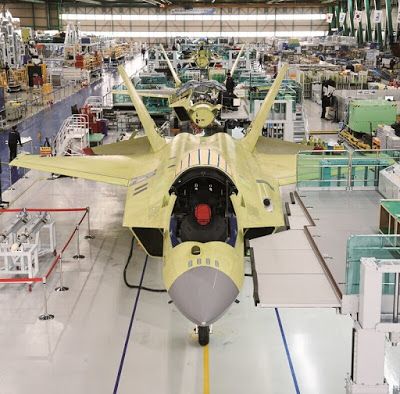Airplane prototypes are made to run various tests, including test flights, before the planes go into mass production. The planes are opened up and taken apart to fix or replace flawed parts and then reassembled for more tests — a process that’s repeated over and over again.
Before the prototype plane can receive the OK for a test flight, it has to go through a year or so of ground testing. KAI opened up the KF-21 assembly line to the Hankyoreh, the first South Korean newspaper to gain access to the site. The wings and fuselages of the fighters on the assembly line were all painted light green, reminding me of the tender leaves on a mulberry tree in the early spring.
Almost the entire assembly process is done by hand. Twenty engineers were working together to load missiles on the second prototype plane.“You may have imagined the kind of conveyer belt you might see on an automobile assembly line, but this is completely different,” said Kim Jun-myeong, head of KAI’s operations department, with a smile.“Airplanes can’t be welded because they’re made of aluminum and other special materials. We assemble the fuselage and attach wings to the fuselage by drilling lots of holes on both sides for inserting rivets. A single wing needs more than 10,000 rivets,” said Lee Il-woo, a senior engineer on the KF-21 project.
Running my hand along the joint, I find the rivets as dense and neat as if they’d been sewn by machine. The rivets themselves are so smooth I can’t even feel them with my hand. If a rivet protruded even a single millimeter from the surface, it would create air resistance.
“The interior of the fighter has a complicated latticework designed to continue functioning even if some parts are damaged by gunfire during a dogfight. Electronic equipment runs from the cockpit to the ends of the wings,” Lee said.

No comments:
Post a Comment